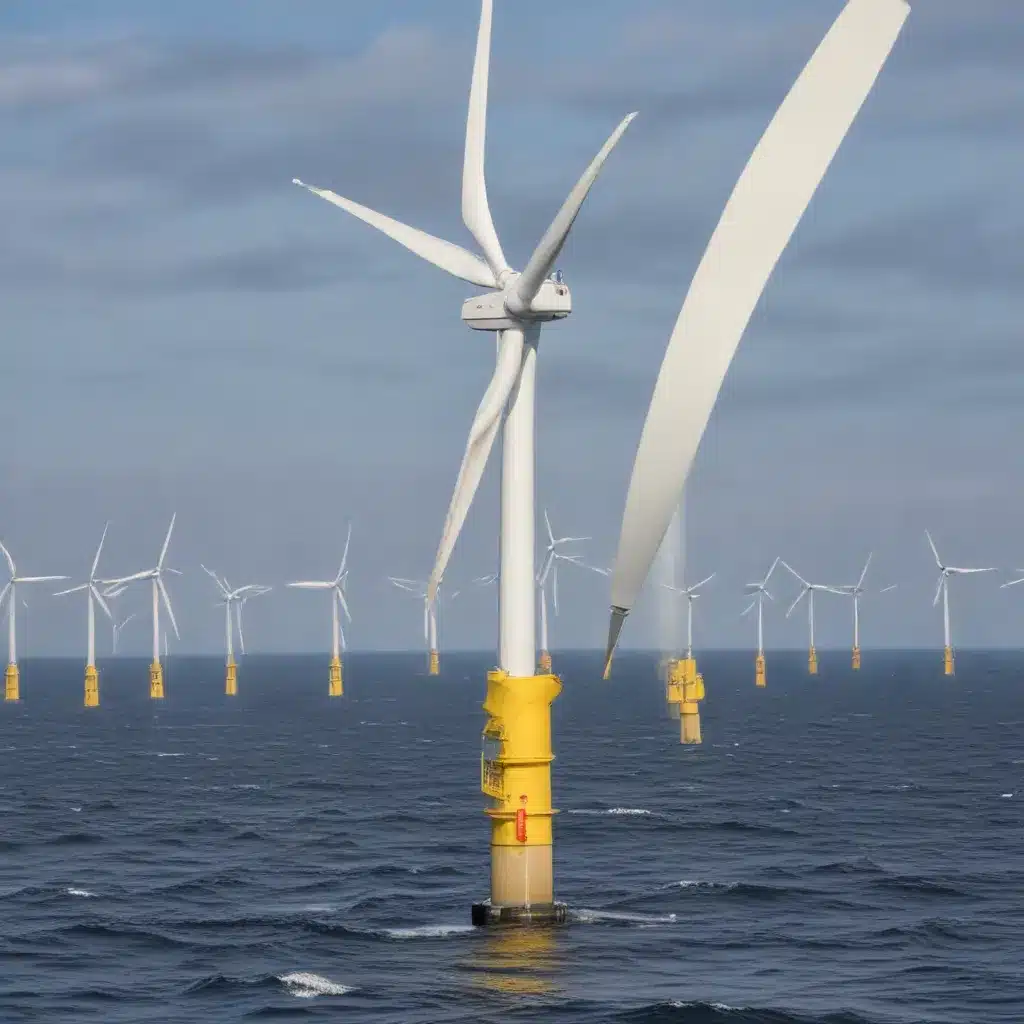
The transition to clean energy in Europe is well underway, driven by ambitious climate goals and the rapidly falling costs of renewable technologies. One area that has seen significant growth and innovation is offshore wind power. From the North Sea to the Baltic, Europe is home to some of the world’s largest offshore wind farms, with installed capacity reaching over 25 gigawatts (GW) in 2022. However, to meet the EU’s target of 300 GW of offshore wind by 2050, the industry must continue to drive innovation across the entire value chain.
Crowdsourcing has emerged as a powerful tool for catalyzing this innovation. By engaging the public and diverse stakeholders in the development of offshore wind technology, policymakers and industry leaders can harness the collective intelligence and creativity needed to tackle the complex challenges ahead. This collaborative approach can lead to breakthroughs in areas such as turbine design, grid integration, and environmental impact mitigation.
Benefits of Crowdsourcing
Crowdsourcing platforms allow for the active participation of citizens, experts, and other stakeholders in the innovation process. This inclusive approach offers several advantages:
Tapping into Diverse Perspectives: By opening up the innovation process to a wide range of participants, crowdsourcing can surface ideas and solutions that may have been overlooked by traditional, more insular R&D efforts. This diversity of input can lead to more holistic and sustainable outcomes.
Accelerating Solution Development: The collaborative nature of crowdsourcing can speed up the innovation cycle, as participants build on each other’s ideas and contribute complementary skills and knowledge. This collective intelligence can help tackle complex, systemic challenges more efficiently.
Increasing Public Engagement: Involving the public in technology development can foster a sense of ownership and buy-in, which is crucial for the successful deployment of offshore wind projects. This engagement can also enhance public understanding and acceptance of the transition to clean energy.
Challenges and Considerations
While crowdsourcing holds significant potential, it also presents certain challenges that must be addressed:
Managing Large Volumes of Input: Crowdsourcing can generate a large volume of ideas and suggestions, which can be overwhelming for policymakers and industry leaders to process and synthesize. Effective data analysis tools and moderation techniques are necessary to extract the most valuable insights.
Ensuring Inclusivity and Representation: It is crucial to ensure that crowdsourcing platforms are accessible and inclusive, providing opportunities for diverse stakeholders to participate. This may require targeted outreach and the removal of barriers to participation.
Maintaining Momentum and Engagement: Sustaining active participation and engagement throughout the innovation process can be a challenge. Incentives, feedback loops, and transparent communication are essential to keep the crowd engaged and invested in the outcomes.
Balancing Simplicity and Complexity: Crowdsourcing can help surface both simple, scalable solutions and more complex, systemic interventions. Striking the right balance between these approaches is necessary to achieve meaningful, long-lasting impact.
Offshore Wind Technology
Crowdsourcing can be particularly valuable in advancing offshore wind technology, which encompasses a range of complex and interconnected components:
Turbine Design and Optimization
Improving the efficiency and performance of offshore wind turbines is a critical area for innovation. Crowdsourcing can engage engineers, materials scientists, and other experts to collaborate on design enhancements, such as blade shape optimization, generator efficiency, and corrosion-resistant coatings.
Grid Integration and Energy Storage
Integrating large-scale offshore wind farms into the electricity grid and addressing the intermittency of wind power are key challenges. Crowdsourcing can bring together electrical engineers, computer scientists, and energy system experts to develop innovative solutions for grid balancing, transmission infrastructure, and energy storage technologies.
Environmental Impact Assessments
Offshore wind projects can have significant environmental implications, affecting marine ecosystems, wildlife, and coastal communities. Crowdsourcing can engage environmental scientists, ecologists, and local stakeholders to assess and mitigate these impacts, informing the development of more sustainable offshore wind projects.
Stakeholder Involvement
Effective crowdsourcing for offshore wind innovation requires the active participation of diverse stakeholders, including:
Community Participation
Local communities near offshore wind development sites must be engaged to understand their concerns, needs, and priorities. Crowdsourcing can provide a platform for residents, community leaders, and local organizations to contribute their insights and shape project plans.
Industry Collaboration
Engaging industry players, such as turbine manufacturers, project developers, and grid operators, can help align crowdsourcing efforts with the practical realities and technical constraints of the offshore wind sector.
Policy and Regulatory Frameworks
Policymakers and regulators can leverage crowdsourcing to inform the development of supportive policy mechanisms, such as Power Purchase Agreements, carbon pricing, and streamlined permitting processes that enable the rapid deployment of offshore wind projects.
Future Outlook
As Europe continues to scale up its offshore wind capacity, crowdsourcing will play an increasingly important role in driving innovation and ensuring the long-term sustainability of this essential clean energy source.
Scalability and Sustainability
Crowdsourcing can help identify scalable solutions that can be replicated and deployed across multiple offshore wind projects, maximizing the impact of these investments. It can also inform the development of more sustainable practices, such as circularity in turbine manufacturing and ecosystem-based marine spatial planning.
Technological Advancements
Continued crowdsourcing efforts can accelerate the development of next-generation offshore wind technologies, including floating wind turbines, offshore hydrogen production, and advanced monitoring and control systems.
Social and Economic Implications
By engaging diverse stakeholders, crowdsourcing can help ensure that the benefits of the offshore wind transition are equitably distributed, addressing social and economic concerns related to job creation, energy affordability, and community resilience.
The European Future Energy Forum has a vital role to play in showcasing and facilitating crowdsourcing initiatives that drive innovation in the offshore wind sector. By harnessing the collective intelligence and creativity of the public, industry, and policymakers, the transition to a clean energy future can be accelerated, delivering sustainable and inclusive benefits for all.






